Once you get away from the touristy side of Macau (see Parts 1 & 2) there are some great back streets full of thriving traditional communities which look like they date back some considerable time. With camera in hand, I ventured inside the labyrinth of narrow alleyways to explore how some of the locals live.
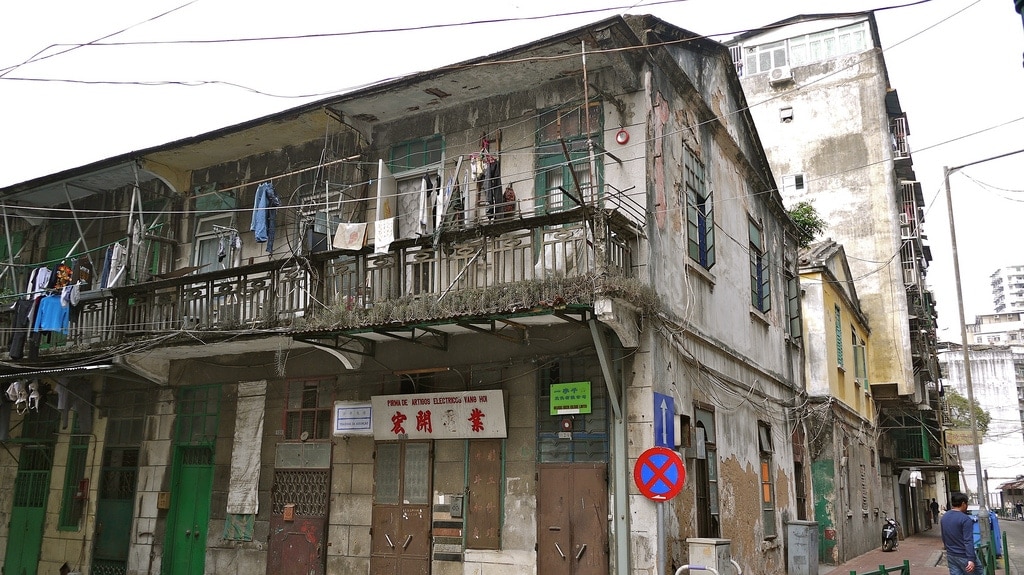
Our journey begins outside a tattered old two-story building with a precarious-looking balcony on the first floor crowded with washing lines and electricity cables hanging haphazardly all over – clearly pre-dating a lot of our modern conveniences.
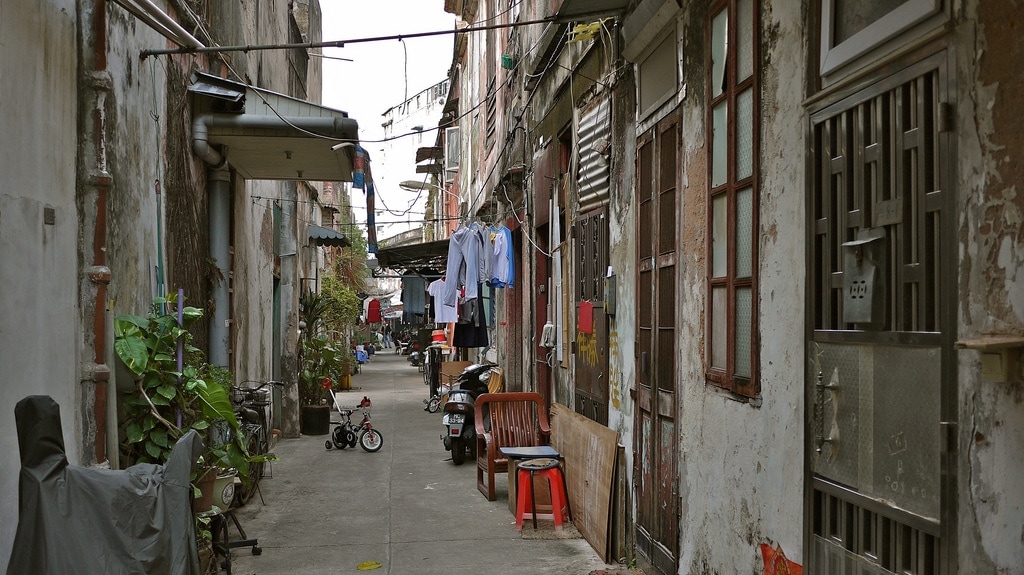
The alley at the back of the buildings opens up into a small residential street lined with the detritus of many years of everyday life taking place in a world that time forgot. Those who live here appear to be mainly older folk looking after their grandchildren.
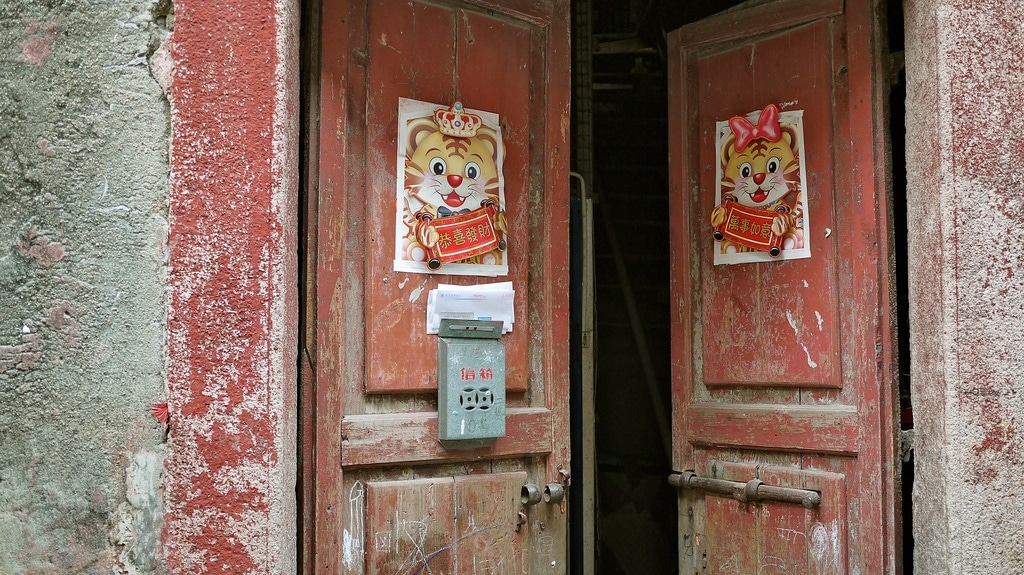
Scarred doorways left ajar shed little light on what lies beyond their threshold. Who knows what secrets they hold…
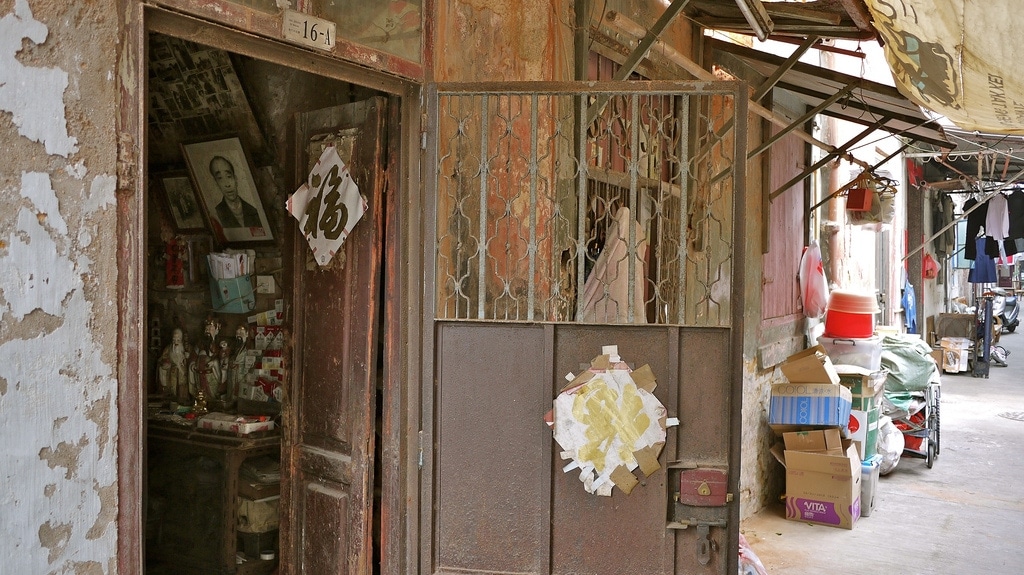
Just inside another gated entrance black and white family portraits can be seen hanging from the wall. Whether these are of the present inhabitants from younger days or a shrine to the deceased I’m not sure.
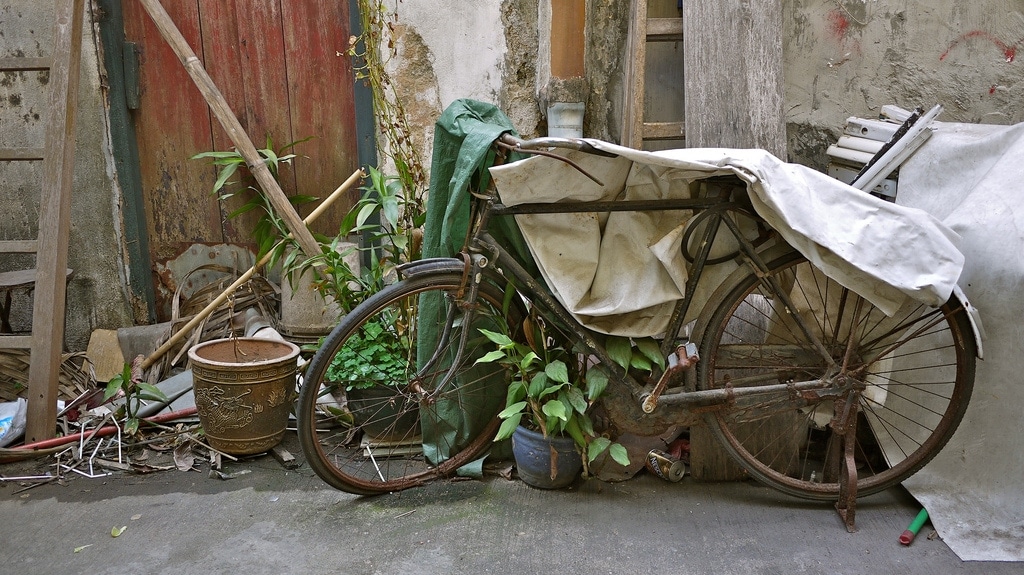
A rusting bike lies half under a tarpaulin, unused for who knows how long. Bicycles and mopeds seem to be the predominant form of transport in Macau which isn’t surprising considering how small it is.
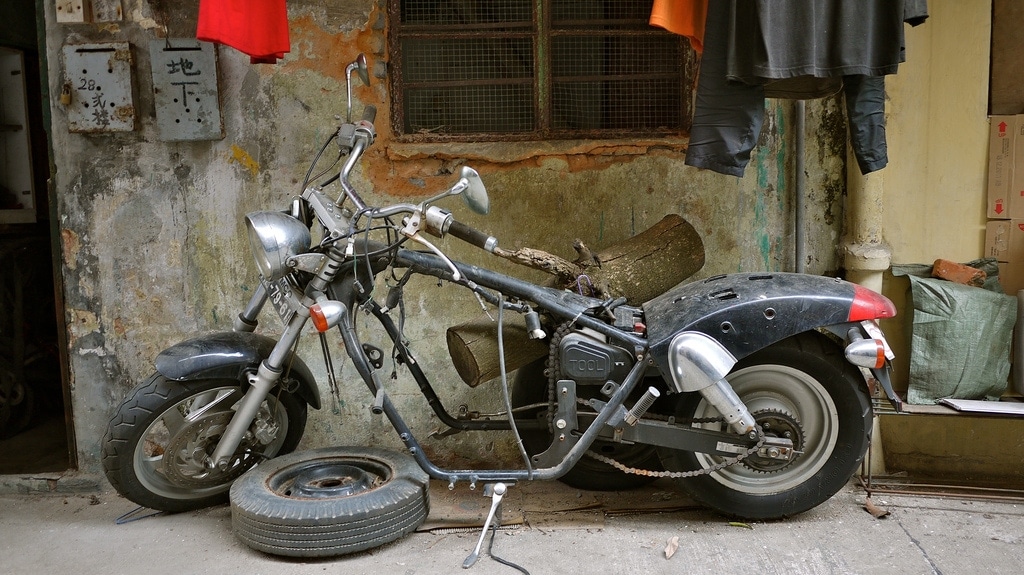
Another motorbike lies gutted against the wall as if waiting for a heart transplant from an unwilling donor. Will it ever be ridden again?
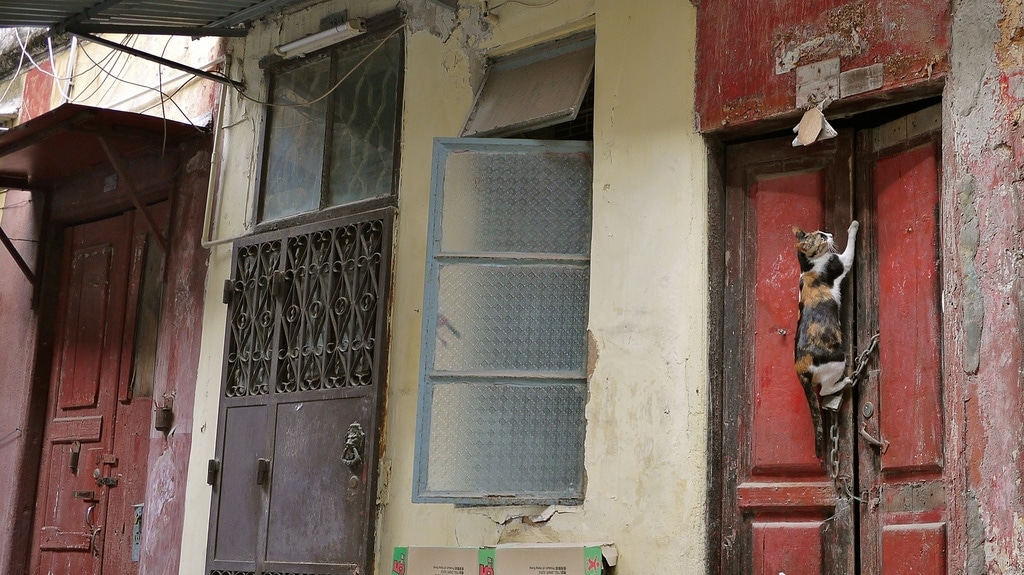
Walking down the narrow lane I spot a cat frozen in its tracks with its eyes fixed upon me. As I raise my camera to take its picture it suddenly darts up the side of the door…
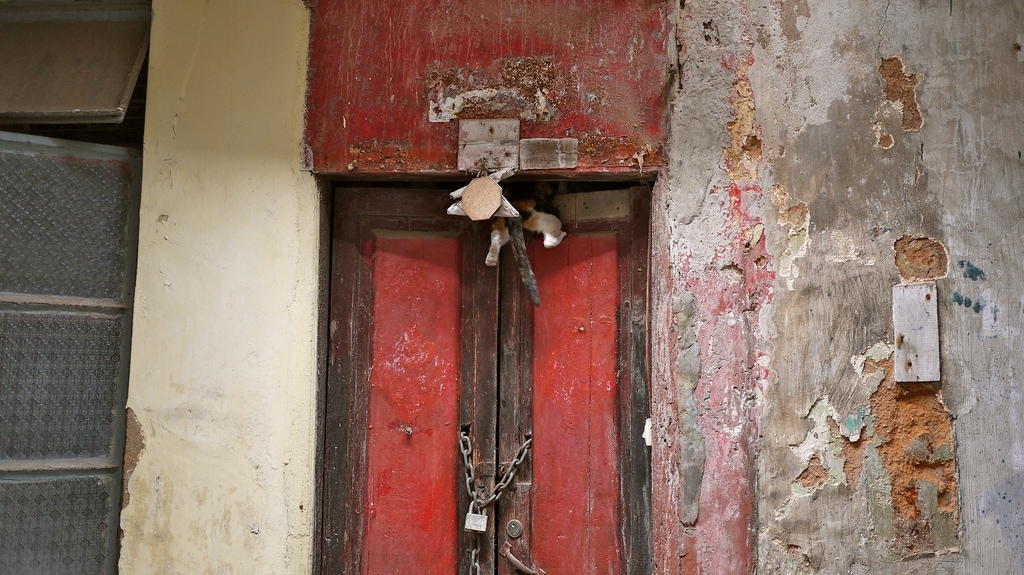
…and makes a quick escape through a crack at the top. This has to be my favourite photo of the whole trip!
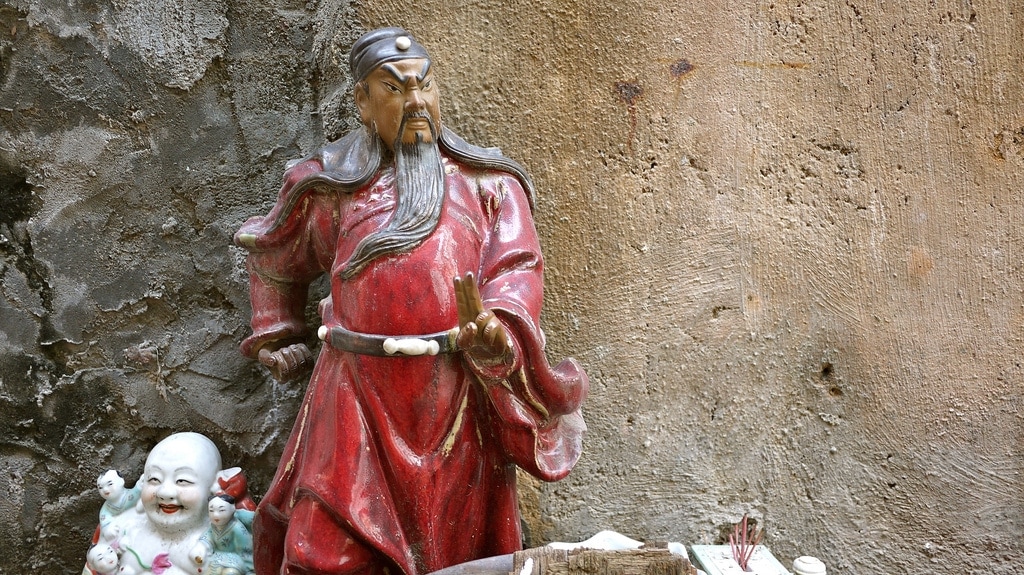
A wise old man and a laughing buddha look on at the retreating feline with mixed expressions. I take the two-finger salute as an invitation to leave.

On my way out I hear the rattle of dice inside one of the houses and see a group of elders playing Mahjong through the window – it was a wonderful photo opportunity but I didn’t want to impose on their privacy.
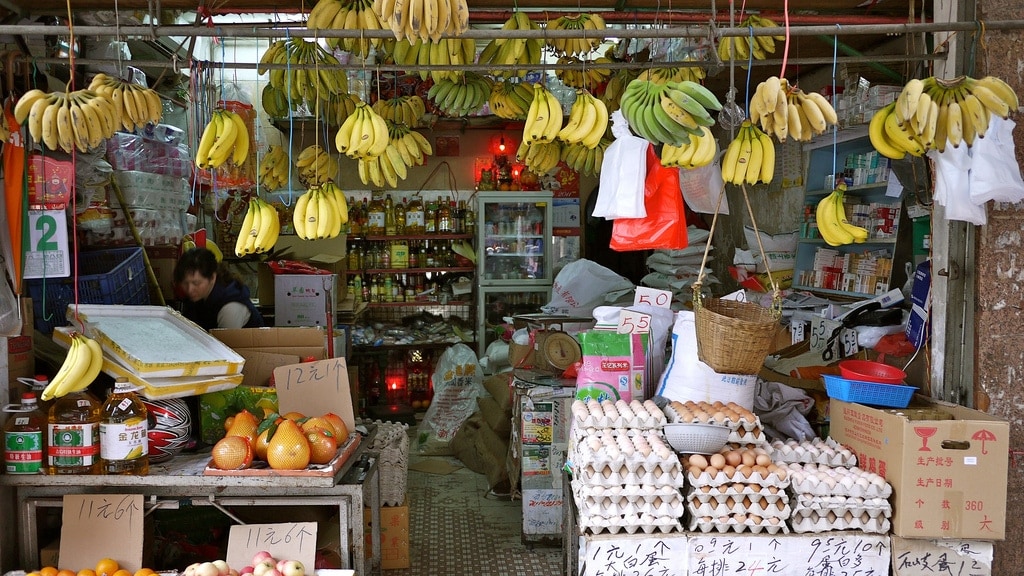
Bananas hang from the front of a shop next door selling all the essentials in one place. I love the controlled chaos of it all – no neatly stacked shelves around here.
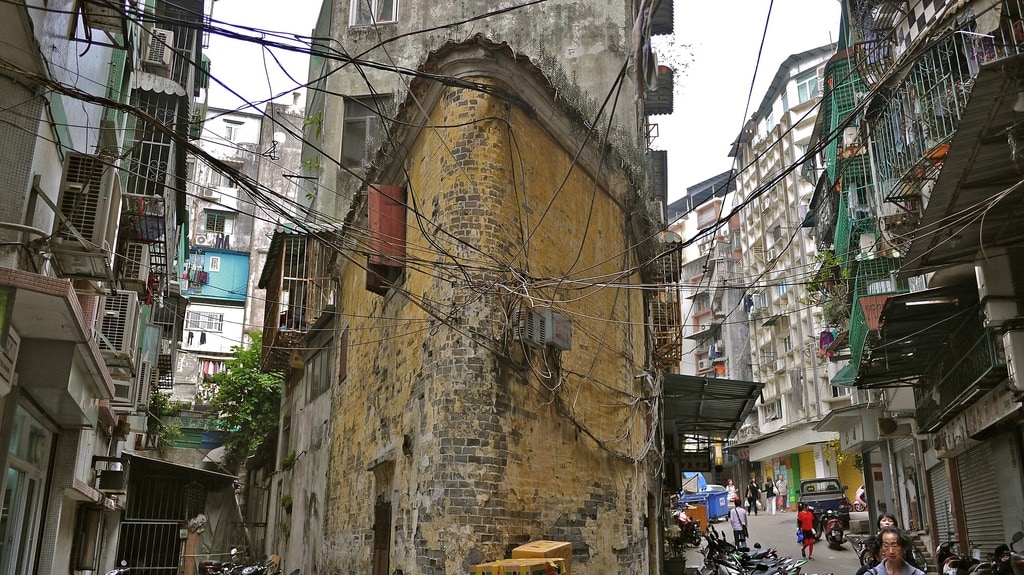
On my way up another street, I come across an old brick house jutting out on the corner of an intersection. It looks completely abandoned, although judging by its size you have to wonder if it was ever inhabitable at all. Its only purpose in life now seems to be as a junction for the jungle or wires leading to and from it.
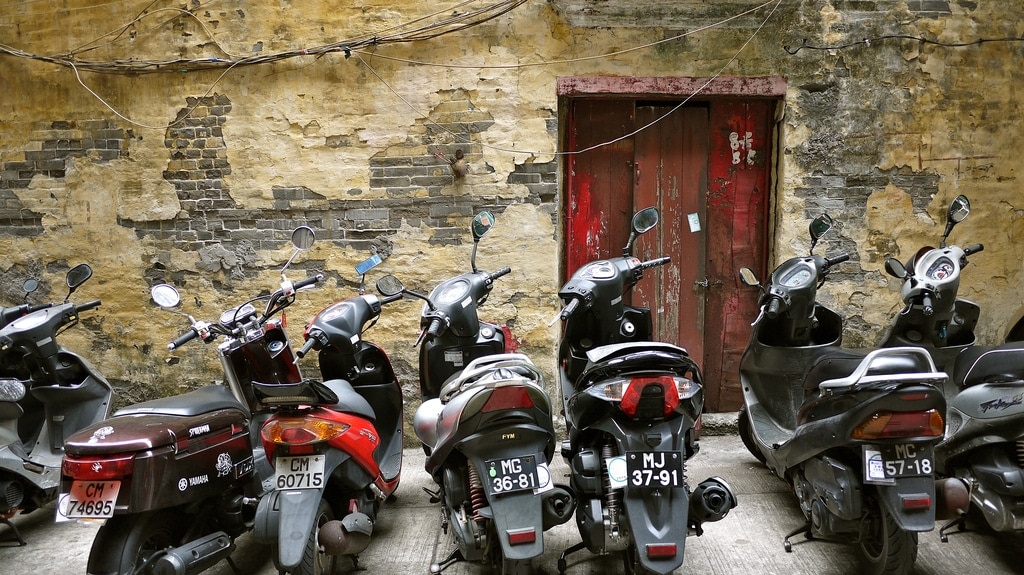
Behind yet another row of stationary mopeds, the peeling plaster presents a small red wooden door (locked).
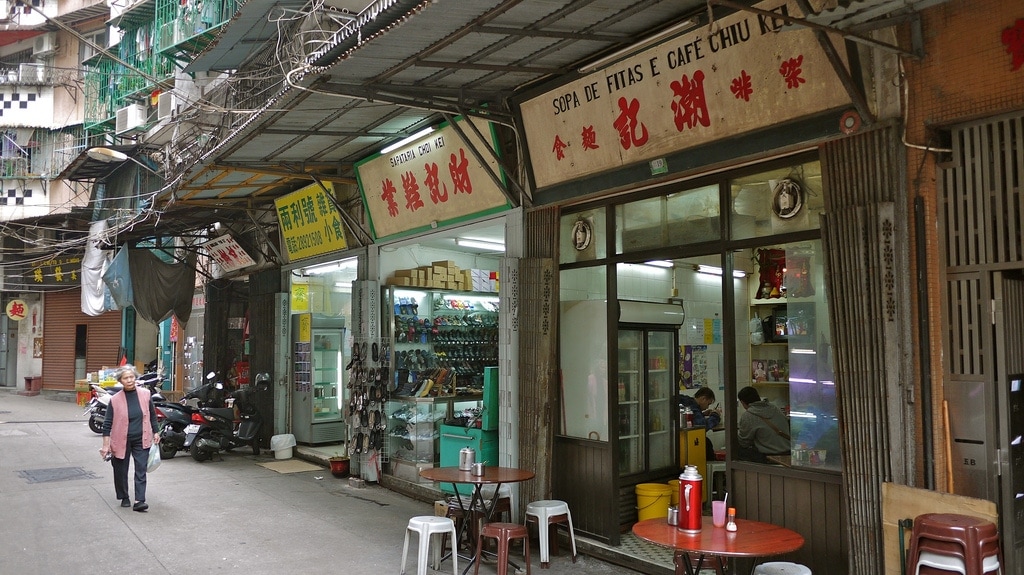
Opposite a small cafe serves its customers a late lunch of local fare under the constant glare of fluorescent strip lighting. Although many of the signs are in Chinese and Portuguese only about 0.6% of the population can speak the latter.
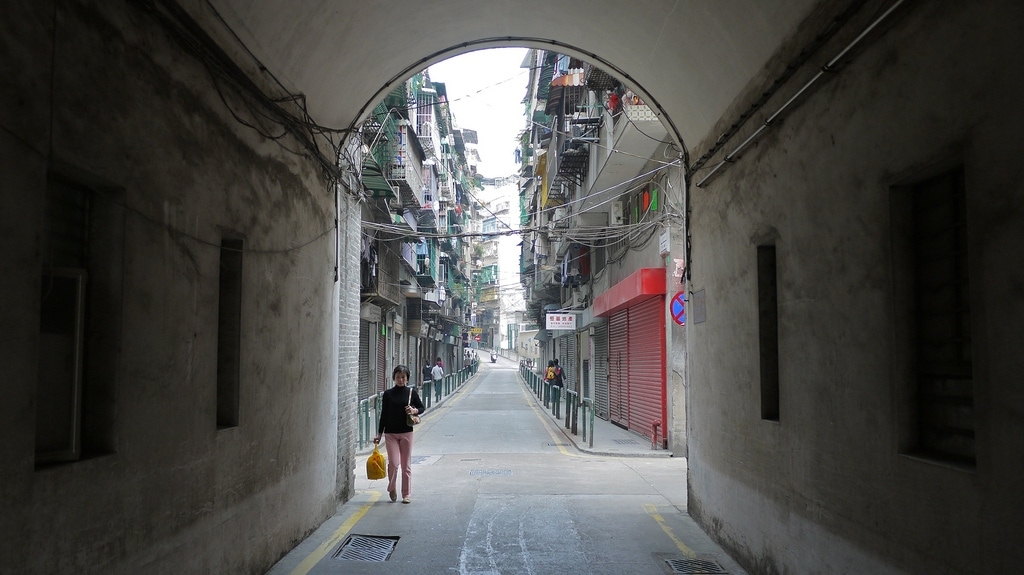
An archway beneath one of the buildings leads through to another maze of quiet residential streets. Even on a Saturday afternoon many of the shops here were closed.

Land reclamation in the 17th century transformed Macau into a peninsula with generally flat terrain, though numerous steep hills still mark the original land mass. In Part 4 of this photo walk, we’ll head back into the centre to take a closer look at some of the old shops and traditions in Macau.

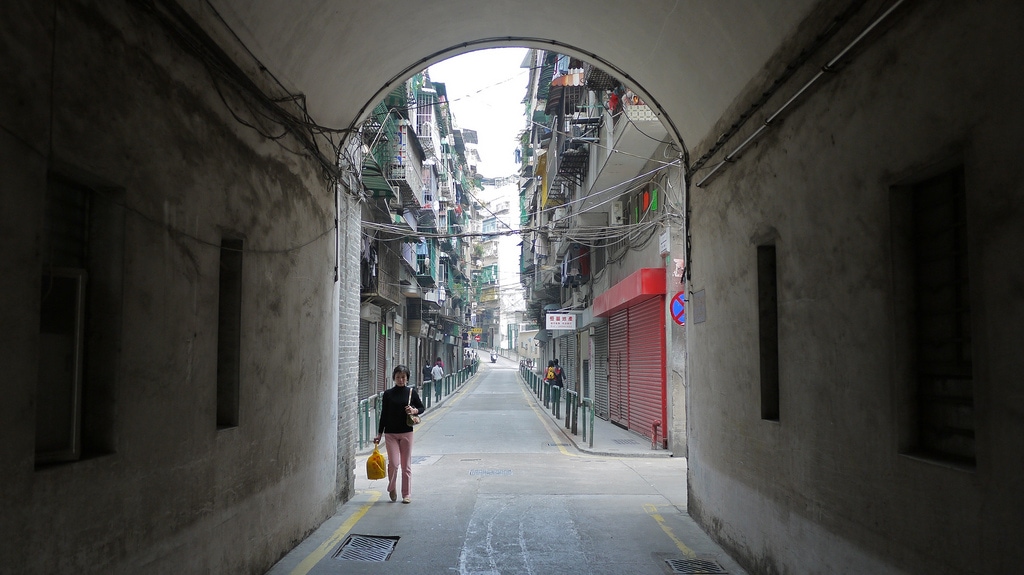
Reply